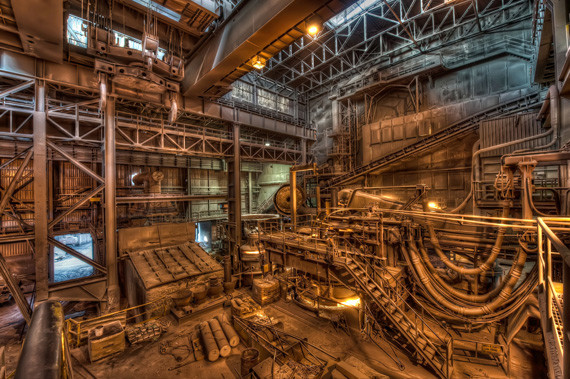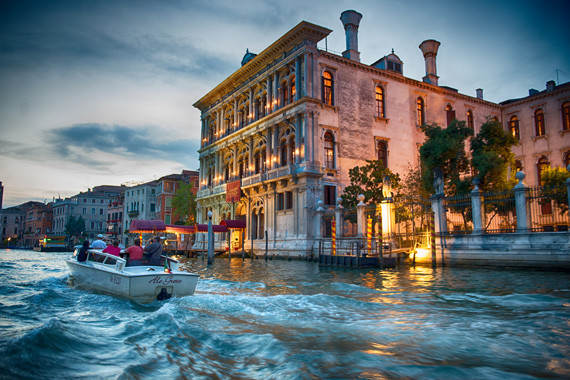Look at something other than your computer screen for a moment and take note of the world around you. You should notice bright highlights and dark shadow areas without much of a problem. Film and digital sensors don’t see as well as you do. The shadows and highlights may be quantified as numbers that represent the luminance of any scene.

Photo by Augusto Mia Battaglia.
The standard measure of luminance is expressed as candelas per square meter or cd/m2. The luminance of the sun is expressed as a ratio of 1,000,000,000:1 or 1 billion candelas to 1 square meter. These are other common expressions of luminance:
- Starlight = 0.001:1
- Moonlight = 0.1:1
- Indoor light = 50:1
- Sunny sky = 100,000:1
So what does all this mean to me as a photographer? Well, if an average sunny day has a luminance of 100,000:1 this means that the brightest area of a scene is 100,000 times brighter than the darkest area. Of course, all outdoor scenes are not fixed at 100,000:1. Haze, clouds, early morning and late afternoon sun all impact the dynamic range of an image. Shooting at noon is far different than shooting during the golden hours. I generally avoid shooting outdoors between around 10:00 AM and 2:00 PM because even with HDR as a tool, the harshness of the dynamic range does not make for pleasing images.
For our purposes here think of stops as exposure values or EV’s. An EV is an integer, a whole number, corresponding to the scene luminance. Under this formula an EV=0 when the correct exposure is 1 second at f/1.0. An EV increment of 1 is the equivalent of 1 stop so that an increase in EV by 1 halves the amount of luminance while an increment of 1 stop down doubles the luminance or available light. The human eye has a dynamic range of 100,000:1 which, in turn, is equivalent to a range of 20EV. Below I show some common mechanical values for a number of capture devices as well as some display medium.
- Negative film: dr=1500:1 or 10.5EV
- Computer monitor: dr=500:1 or 9.0EV
- D-SLR: dr=300:1 or 7.0EV
- Compact digital camera: dr=100:1 or 6.6EV
- High quality glossy print: dr=200:1 or 7.6EV
- High quality matte print: dr=50:1 or 5.6EV

Photo by Andreas Ullrich.
So there you have it, the crux of the problem. If the scene outside has a dynamic range of say 50,000:1 and the sensor on your very high quality, professional grade DSLR only has a sensor capable of capturing a dynamic range of 300:1 how do you capture and display images that have a higher exposure value than the technology is capable of capturing or displaying?
Let’s look at how images are captured in your camera as a lead into answering our primary question of how to capture images that are mechanically uncapturable. Digital sensors replace film in the modern world so I will limit this discussion to digital photography. Many DSLR cameras and some others support a raw format for image capture. Canon’s CRW and CR2 files or Nikon’s NEF files are examples of proprietary raw captures. A single raw file records around 10EV. Pretty good, but still not quite good enough to get everything that’s out there. The advantage of the raw file, however, is that it captures a continuum of stops from under to overexposed in a single file which can prove advantageous later on. Some users, because of the extended EV have called the raw file a medium dynamic range image.
Cameras also store images as JPEG files. The sensor interpolates the color and intensity and sends the exposure through a series of in-camera steps that address white balance, saturation, sharpness, contrast and so on. JPEG compression, the final step in the process, is performed and the file is stored as a JPEG file. The JPEG file contains only 256 levels of intensity and captures only about 8EV. It is a low dynamic range image. For most studio work the JPEG file is the file of choice for me. It cuts down on my workflow and processing time and for portraiture where I am in full control of the light and the dynamic range of that light, I find no need to shoot raw. Landscapes, on the other hand, I only shoot in raw.
The two standard formats for saving images after the raw conversion takes place are TIFF and JPEG. While JPEG files can be produced in-camera from the raw exposure using proprietary software in the camera, TIFF files are created during the processing of raw files in processing software such as Photoshop or Lightroom. The JPEG file contains luminance values ranging from 0-255 (a total of 256) while the TIFF file stores values from 0-65,535. It is clear that the TIFF file stores a far wider luminance range than does the JPEG file.
Still, even the TIFF file cannot capture the full dynamic range of a beautiful landscape. In order to produce a high dynamic range image you must look elsewhere. Two formats for storage are available: the RadianceRGBE (.hdr) and OpenEXR (.exr) generally produced in software outside of Photoshop or Lightroom. I use Photomatix PRO for my HDR conversions from raw files and generally save the RadianceRGBE format. The RadianceRGBE format is a 32-bit format while the OpenEXR format starts out as 48-bits but is reduced in processing to 32-bits. Both formats are lossless (saving and reopening does not degrade the files). The RadianceRGBE format represents 76 orders of magnitude in dynamic range, remember that the human eye has a mere 20EV range, far more than one might ever need. The drawback, although I have never been able to really see the difference, is that the RadianceRGBE format is slightly less accurate than the OpenEXR format.

Photo by Lisa Elliott.
Once the hdr conversion takes place, that is you now have an .hdr or .exr file there is one more step required. In its native state, the HDR files are unusable. One must tone map the HDR file in order to make it useful. Tone mapping is a scaling back process taking the 32-bit HDR file and reducing the 32-bit floating point values present in the HDR file and producing a 16-bit TIFF or 8-bit JPEG file containing fixed integer values. Now you have an image that mirrors the high dynamic range of the landscape you are photographing. While not perfect, the HDR process is a quite good answer to the problem of capturing the uncapturable.
About the Author
Roger Passman is an award-winning professional photographer located in Northern Illinois (rogerpassmanphotography.net). He often leads creative photo workshops designed for beginning through intermediate amateur photographers.
Like This Article?
Don't Miss The Next One!
Join over 100,000 photographers of all experience levels who receive our free photography tips and articles to stay current:






Hi Trung,
I won’t take his values as concrete absolute terms. It was in that time and space :))
Technology moves on, so is photography, dslr or normally dslm or mirroless are recording 14EV DR easily these days.
But what I will take from this great article, which no intelligent being tried to replicate these days is the relative values. shame!
How much expected DR from environment we can gather, so that we can buy our equipments accordingly; cameras, monitors, tv etc. By the looks of it a good mirrorless m43 sensor or anything above is good enough for capturing high DR scene in anytime, other than daytime shoot. Which, we should avoid anyways, no matter what equipment you got, because couple of DR advantage won’t cut it, no matter what :)
Thanks, for this sharing.
But I see some details in doubt.
“” I generally avoid shooting outdoors between around 10:00 AM and 2:00 PM because even with HDR as a tool, the harshness of the dynamic range does not make for pleasing images.””
Nọt in DR, but because of light direction.
“” Negative film: dr=1500:1 or 10.5EV
Computer monitor: dr=500:1 or 9.0EV
D-SLR: dr=300:1 or 7.0EV””
“” A single RAW file records around 10EV.””
“” The JPEG file contains only 256 levels of intensity and captures only about 8EV.””
I don’t know what he wants to say. RAW from what camera, not from D-SLR? And Jpeg?
“” The JPEG file contains luminance values ranging from 0-255 (a total of 256) while the TIFF file stores values from 0-65,535.””
I think, you must say “Tiff 16 bit”, because it also has Tiff 8 bit (only can store 0-255 value steps).
Thanks for your sharing of this information.